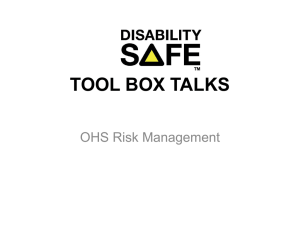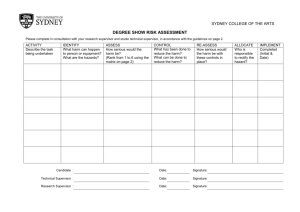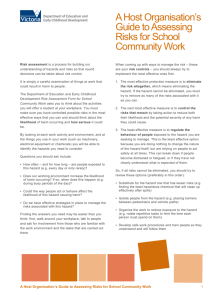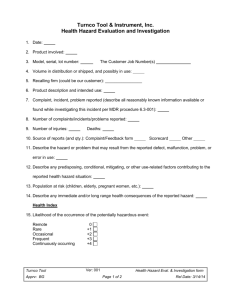Step three: assess the risks and existing control measures
advertisement
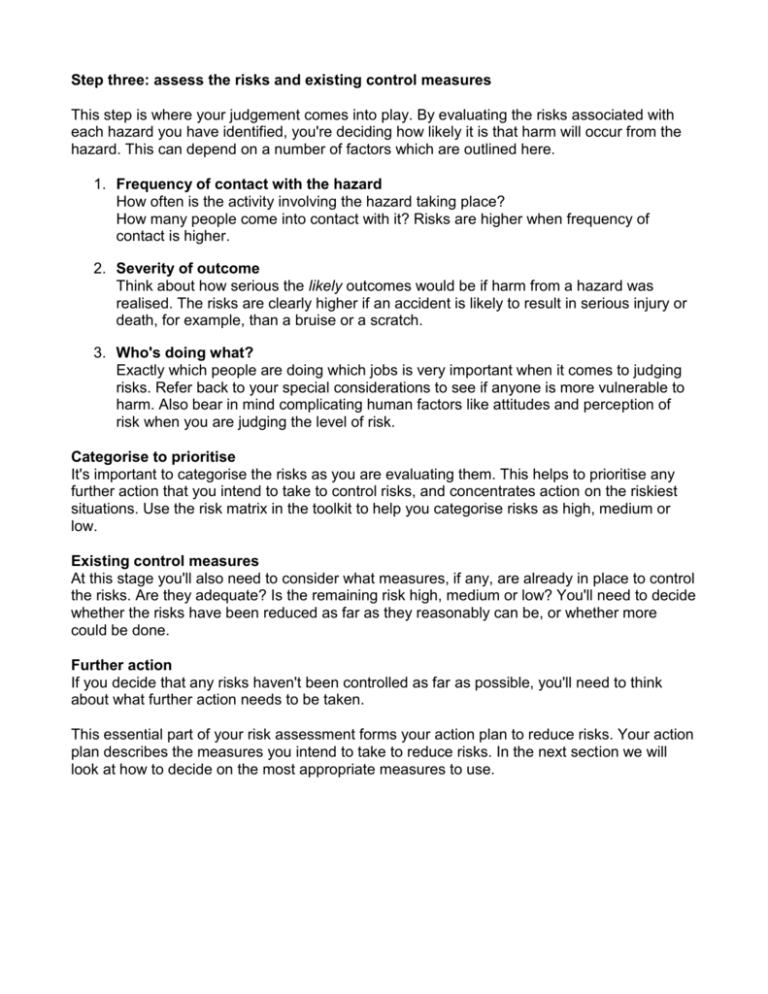
Step three: assess the risks and existing control measures This step is where your judgement comes into play. By evaluating the risks associated with each hazard you have identified, you're deciding how likely it is that harm will occur from the hazard. This can depend on a number of factors which are outlined here. 1. Frequency of contact with the hazard How often is the activity involving the hazard taking place? How many people come into contact with it? Risks are higher when frequency of contact is higher. 2. Severity of outcome Think about how serious the likely outcomes would be if harm from a hazard was realised. The risks are clearly higher if an accident is likely to result in serious injury or death, for example, than a bruise or a scratch. 3. Who's doing what? Exactly which people are doing which jobs is very important when it comes to judging risks. Refer back to your special considerations to see if anyone is more vulnerable to harm. Also bear in mind complicating human factors like attitudes and perception of risk when you are judging the level of risk. Categorise to prioritise It's important to categorise the risks as you are evaluating them. This helps to prioritise any further action that you intend to take to control risks, and concentrates action on the riskiest situations. Use the risk matrix in the toolkit to help you categorise risks as high, medium or low. Existing control measures At this stage you'll also need to consider what measures, if any, are already in place to control the risks. Are they adequate? Is the remaining risk high, medium or low? You'll need to decide whether the risks have been reduced as far as they reasonably can be, or whether more could be done. Further action If you decide that any risks haven't been controlled as far as possible, you'll need to think about what further action needs to be taken. This essential part of your risk assessment forms your action plan to reduce risks. Your action plan describes the measures you intend to take to reduce risks. In the next section we will look at how to decide on the most appropriate measures to use.


